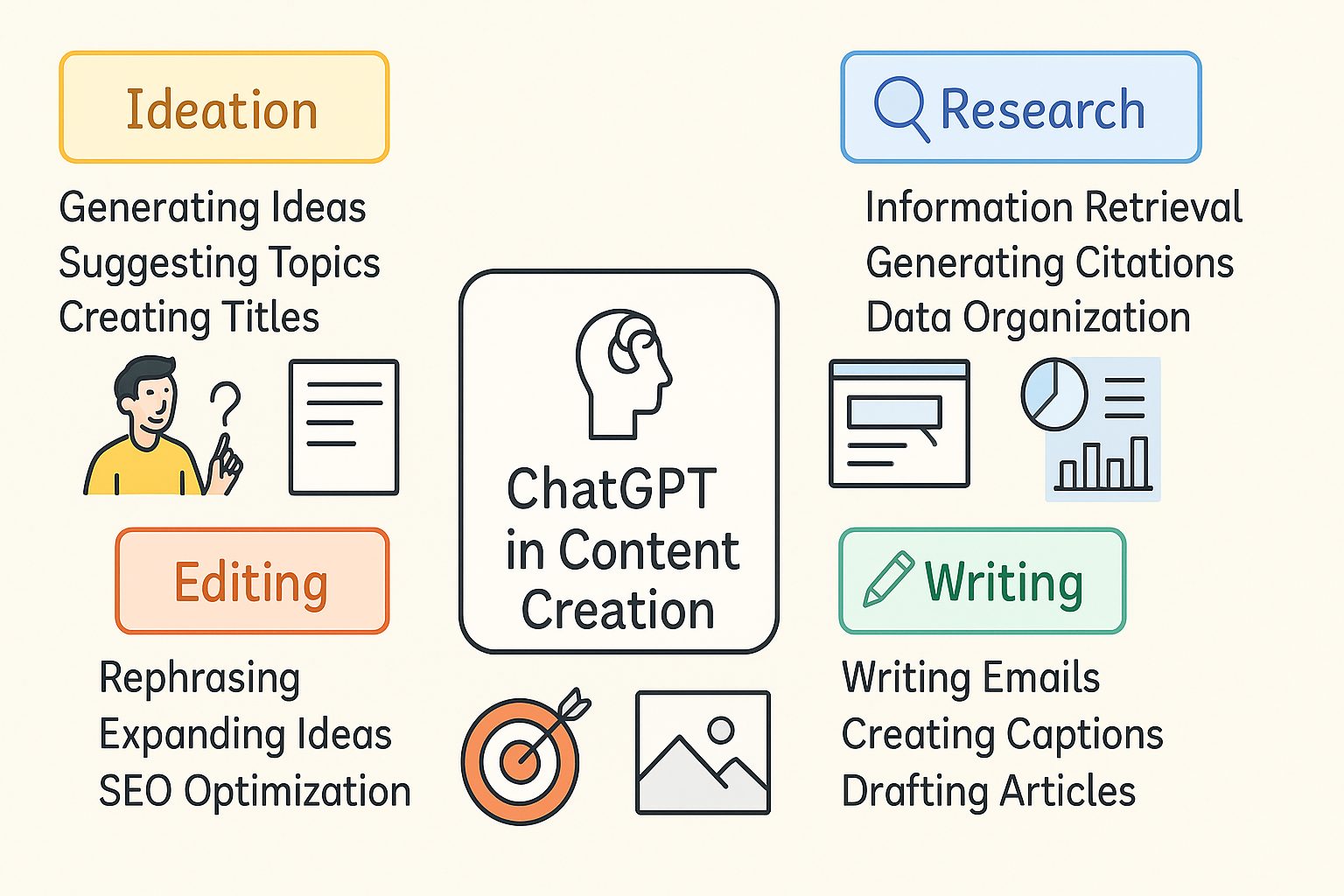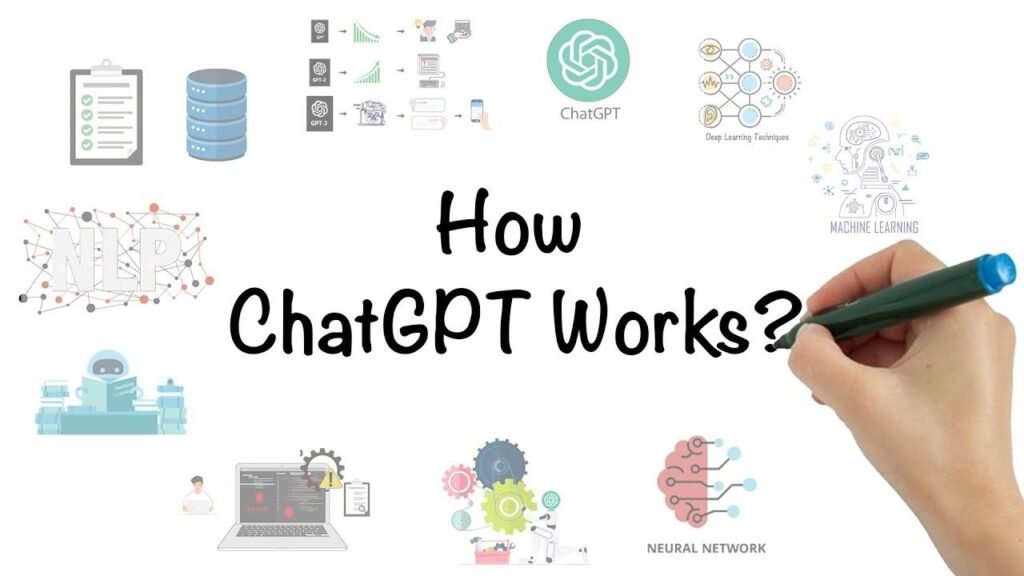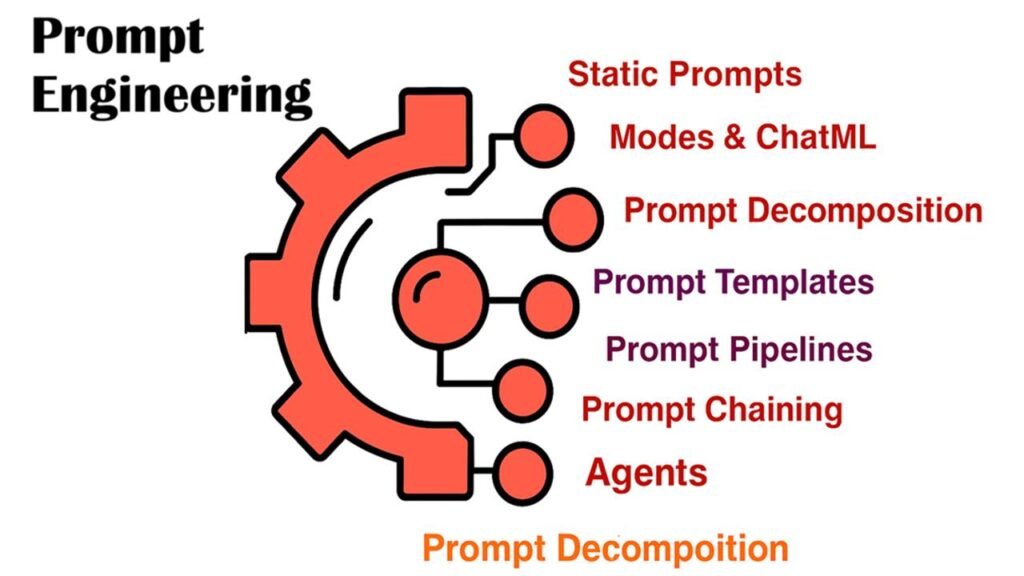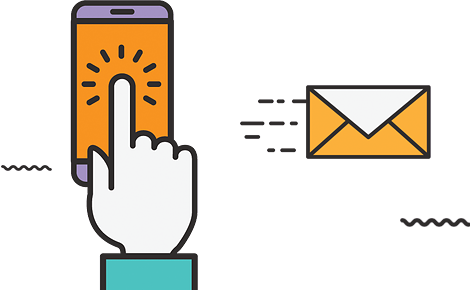
What is ChatGPT? Explained
Are you curious about the latest improvements in artificial intelligence and how they’re transforming the way we interact with technology? If so, you’ve likely come across the term ChatGPT. In this article, we’ll delve into the mesmerizing world of ChatGPT Prompt, exploring what it is, how it works, and its real-world applications. So, catch up as we take a journey through the kingdom of AI-powered conversation! ChatGPT is a powerful large language model made by OpenAI that can write text that sounds like it was written by a person. I’m going a explain how you will use this technology to push your business and individual. It was taught to understand and respond to a wide range of questions by reading a huge amount of text from the internet.
As AI technology keeps getting better, I observed more businesses, researchers, and regular people are using ChatGPT to help them write text, translate languages, summarise articles, and do other things.
But there are so many options that it can be hard to figure out where to start. I wrote this article, which is very helpful in that, and I’ve made a list of the best ChatGPT prompts to help you get the most out of this powerful AI tool. And you want specific Prompt Ideas like Useful Creativity 100+ ChatGPT Prompt Ideas for Blogging. So, feel free to go to this blog, you will get several Prompt Ideas.
Introduction to ChatGPT
ChatGPT is a top-notch language AI program developed by OpenAI. Part of the GPT (Generative Pre-trained Transformer) family, it can write text that sounds like language used by people, after receiving prompting input. Understanding context, answering tough questions, and having natural-sounding responses are the things that make ChatGPT stand out as revolutionary.
And it is often applied in many industries, from producing information to assisting with customer support and creative meetings. Anyone aiming to be more efficient rather than just busy finds Excel to be indispensable.

How Does ChatGPT Prompt Work?
Transformers, a type of deep-learning system, are central to the design of ChatGPT, since they handle and generate information in a sequence very well. Let me explain what happens with a basic outline.
- Training Data: Plenty of books, websites, and articles have been fed into the training of the ChatGPT Prompt. It gets to know grammar, special aspects of a language, and the signals around a text.
- Response Generation: When a prompt is entered, the model examines and then predicts the best arrangement of words for your response.
- Learning Through Feedback: ChatGPT keeps learning to improve the quality of its responses.
What this means is ChatGPT can answer a broad array of questions, and is well suited for use in personal, professional, and even creative settings.
What is a ChatGPT Prompt?
A prompt is what you give to ChatGPT to tell it what your feedback needs to focus on. Think about a prompt as your chance to tell the AI what to do. When your question is easy to understand, ChatGPT can give you the best answer.
For example:
- Simple ChatGPT Prompt: “Write a blog introduction.”
- Enhanced Prompt: “Introduce a blog post on the advantages of AI in education with about 150 words.”
An AI will give a better response if the prompt is simple and clear. The art of crafting effective inputs is often called prompt engineering.

What is Prompt Engineering? And Explain
Prompt engineering! It’s the artwork and technological know-how of crafting effective actions to get the desired output from huge language models (LLMs) like me. Think of it as having a conversation with an exquisite-smart being who would possibly, from time to time, misunderstand your intentions if you’re no longer clear enough.
Instead of just asking an easy question, spark off engineering entails carefully designing the input to guide the version in the direction of a specific and beneficial response. It’s approximately being strategic with your wording, shape, and even the inclusion of precise details or commands.
Here’s a breakdown of what it includes:
- Clarity and Specificity: The greater particular your prompt, the better the chances of having a relevant solution. Instead of “Tell me about puppies,” you might ask, “What are the commonplace health worries for Golden Retrievers?”
- Context Provision: Giving the model a few historical statistics may be vital. For example, rather than “What’s the capital?”, you would possibly say, “Given that the example is a country, what is its capital city?”
- Instruction Following: LLMs are frequently accurate at following explicit instructions. You can tell them the layout you want the answer in, the tone to undertake, or unique constraints to observe. For instance, “Summarize the key arguments in this article in 3 bullet points.”
- Few-Shot Learning: You can provide the version with a few examples of the desired input-output pairs in the activation itself. This allows the version to apprehend the sample you are looking for and generate comparable outcomes.
Iterative Refinement: Often, the primary set off isn’t perfect. Prompt engineering is an iterative technique. You may need to experiment with one-of-a-kind phrasings and structures to satisfactorily format the output.
Why Are Prompts Important?
Effective Prompt engineering can extensively impact the exceptional accuracy and value of the LLM’s responses. The outcome of your interaction depends a lot on the way you ask your question. When the prompts are well-structured, that is when the tool’s true abilities are used. Mastering prompt engineering means you can:
Get answers you can trust much faster.
- Get more different and personal answers.
- Post your specific needs to change how the tool responds.
- Reduce ambiguity and errors.
- Elicit extra innovative and insightful solutions.
- Enable you to carry out complicated obligations by breaking them down into a sequence of well-defined activities.
- Unlock the full potential of the language version for diverse packages, from content technology to hassle-fixing.
In essence, spark off engineering is a way to communicate correctly with these effective AI systems to harness their abilities to your unique wishes. It’s a talent that’s turning into increasingly more valuable as LLMs end up greater integrated into our lives and workflows.
Step-by-Step: How to Become a Prompt Engineer
The first thing to do is get to know the basics of Generative AI.
- Find out about LLMs by exploring resources from OpenAI and Hugging Face blogs
- See YouTube videos for details on NLP and transformers
The second step is to work with AI tools in real life.
- You should begin with a ChatGPT Prompt or Gemini.
- You can have Midjourney produce your images for you.
- You can use tools such as Runway ML, which automate turning text to video.
Step 3: Analyze How Business Questions Are Asked
- You should get familiar with prompt frameworks, for example:
- To build such a product, you need instructions, context, and a style for the output.
- Showing a small number of examples isn’t effective.
- Role-based questions which ask students to pretend to be a particular character (Act as a…)
Joining prompting communities comes next as Step 4.
- You can find Reddit’s Prompt Engineering community at r/PromptEngineering
- You can find Midjourney Official and PromptHero on Discord, too.
- X (Twitter): Follow prompt engineers sharing tips
Step no 5: Build a series of learning prompts to use.
- Take photos of your setup and write down the outcomes of what you have done.
- Make some case studies or tutorials about small projects you have finished.
- Try to post your resume on LinkedIn or share it on your blog.
Step 6: Follow Updates About AI
- Subscribe to newsletters: The Rundown AI, Ben’s Bites, and TLDR AI
- Discover how to promote, fine-tune, and tune your prompt models
In Step 7: Work on Your Own or Through Regular Jobs
- For example, try signing up on Upwork, Fiverr, and PromptBase.
- You may also apply for jobs labeled ‘AI Content Specialist’ or ‘Prompt Developer.’
Good Prompts Explained
For this blog, I’ll provide a reliable outline regarding how to use a key.
Treat your website like a real business. Make an informative outline on how using AI can be useful in digital marketing. Be sure to add them.
Image made with assistance from Midjourney and Dalle, like “An imagined city that includes flying vehicles and bright neon lights, at sunset, shot using 4k ultra-high-resolution.”
Coding ChatGPT Prompt: “Make a Python application to automatically pull prices from Amazon products and save them as CSV files.”
Career Opportunities in Prompt Engineering
- Freelancer Prompt Designer
- An AI Content Strategist
- I am a Creative Director for AI Art, too.
- Prompt Engineer at tech companies
- The manager works with AI Tools.
- Trainer for Prompt Engineering
Free Resources to Learn Prompt Engineering
- The OpenAI Cookbook
- Prompt Engineering Guide by DAIR.AI (GitHub)
- LearnPrompting.org
- On YouTube, you can check out Matt Wolfe, Future Tools, and AI Advantage.
- You can take free courses with Coursera and DeepLearning.AI.
Good Reasons to Use ChatGPT Prompt
We shouldn’t move forward with great prompts until we know the reasons why ChatGPT is so widely used in both business and education.
- Efficiency: In only a few seconds, you can make reports, creative ideas, or plans.
- Versatility: You can use it in education, marketing, or IT.
- Accessibility: You don’t need to be tech-savvy to understand how to use it.
- Scalability: Scaling rapidly, saving both time and cost, is much easier for startups and small businesses using this technology.
Writing Good Prompts for ChatGPT
If you want to get the best results, be sure to create prompts by taking these six steps.
1. Be Specific and Clear: Avoid ambiguous language. The clearer you are about your subject, the more useful ChatGPT will be.
- Vague Prompt: “Suggest blog ideas.”
- Specific Prompt: “Recommend five blog topics that busy entrepreneurs can use to share health and fitness advice.”
Because of this, the AI won’t guess your needs, and you won’t see irrelevant answers.
2. Include Context: Give the AI the information it needs to make sense of what is happening. Should your photography be more about color or sticking to black and white? Explain it to your model.
- Example: Welcome everyone signed up for our coffee subscription service with an email. Use a nice tone and include the points like offering curated beans and unique deals.”
3. Use Step-by-Step or Bulleted Instructions: When you need to accomplish a tough task, break down the steps into something more logical, for example
Write an Instagram post to tell our community about our newest yoga class. Highlight these points:
- Weekly sessions for beginners.
- Certified instructors.
- Early bird discounts.
4. Experiment with Different Approaches
Should your initial results not impress you, modify the question you ask. Change the level of detail until you see the reaction you are looking for.
- Original Prompt: “Summarize this article.”
- Revised Prompt: You should summarize the main points and final argument of this article in three sentences.
5. Choose the Output Length, the Format, or the Tone
Be sure to tell ChatGPT both the kind of results you want and how you want those results delivered.
- Example: Make a joke in your tweet about why anyone would like a capsule wardrobe. Keep it under 280 characters.
6. Test and Refine
Since no two tasks are identical, it’s important to modify your prompts as you monitor the program’s results. You’ll find out, after some time, what helps you achieve your goals.
Real-World Applications of ChatGPT Prompt Engineering
Need inspiration? Here are some ways ChatGPT prompt can enhance your daily life or business operations:
- Content Creation: Make your blog posts, updates on social media, newsletters, and related content by following targeted prompts.
- Produce a 200-word introduction to your blog that shares sustainable ways to travel.
- Come up with 5 clever captions for posting on a coffee shop’s Instagram.
- Customer Support: Present your customers with FAQs or troubleshooting steps when they ask questions.
- Give a simple list of how to reset a password.
- Marketing Copy: When making ads or email campaigns, always have a clear way for customers to act.
- Write a convincing email to receive a 20% discount on our eBooks. Focus on urgency.
- Learning Assistance: Help both students and working professionals understand complicated topics more easily.
- Teach quantum physics in a way a high-school student would understand.
- Personal Development: Get yourself motivated by trying things like these:
- Tell us five tricks for remote employees to increase their efficiency.

Maximize Your Potential with ChatGPT Prompt
You’re not just having talking with an artificial intelligence when using ChatGPT. you’re creating a path full of options, using your prompts for support. By mastering prompt engineering, you can design tailored responses to meet your unique needs and objectives in a fraction of the time it would take manually.
Tip from my side
Practice is key. Try experimenting with different options, see what your results are, and work on improving your needs. With each session using ChatGPT, you’ll learn how to create prompts that truly help you.
A Guide to Using ChatGPT with Prompts
Are you interested in what artificial intelligence can accomplish and want to learn how to put these abilities to work? We are excited to introduce you to ChatGPT! Understanding how to work with ChatGPT can make a real difference in how you learn, work, or lead your business.
This guide will explain ChatGPT prompt, explain what prompts are, describe how ChatGPT works, and most importantly, how to develop effective prompts.
Real-World Applications of ChatGPT
Because it is flexible, ChatGPT has a wide range of applications. For example:
- Content Creation: Get some ideas for posts on your blog, arrange the captions on your social media, or ready technical documents.
- Customer Support: Use machines that have been trained by you to respond to customer questions and provide information on products.
- Learning and Teaching: Helping learning by simplifying complicated information.
- Collaboration: Support teams by helping them create ideas, make proposals, and write significant emails.
If you use ChatGPT, you can up your productivity and come up with creative ideas.
How ChatGPT Prompt Works
Before discussing how to make prompts better, I want to show you what’s inside ChatGPT. A Transformer-based deep learning structure is at the heart of ChatGPT. Here’s how it processes information:
- Training Data
In the training process, ChatGPT analyzes a lot of writing to understand relationships and how words work with one another. Having access to different kinds of data allows the model to recognize many various kinds of questions.
- Understanding Prompts
If you ask anything or add a question, the model recognizes why you are asking, how you have asked it, and looks for the best answers it can find. How good your input is largely determines what your results will be.
- Generating Responses
No matter if you use it for writing essays or giving concise answers, ChatGPT uses expected outcomes to generate replies. It’ll guess the next word by using the patterns it picked up during its training. Underlying tools guarantee answers are meaningful, accurate, and relate to the situation.
Guidelines on How to Make Your Prompt Strong, while ChatGPT understands a lot, what it gives you depends on how clear and specific you are in your questions. If you do these things, your prompts will lead to better outcomes.
1. Be Specific
Usually, general questions end up with simple, disappointing replies. Know exactly what goal you have for your brand. Instead, ask teams to show how AI can be used by small businesses to enhance the experience for their customers.
2. Define Context
Let the reader understand your context or the way you see the event. As an example, “Review what professionals in infrastructure can expect by using renewable energy.” When you add background, the reason for your response becomes clearer.
3. Use Step-by-Step Instructions
Divide your problem into steps if the result needs more than a single part.
Example Prompt for clarity: First, mention the leading marketing strategies for online startups, and afterward, step by step, show your audience how to carry them out.
4. Choose what kind of voice you want to use.
You can tell ChatGPT which method you would like it to use. example Prompt for tone/style/role: Create an email to promote a new fitness app, writing in a friendlier manner.
5. Experiment and Iterate
You might find that you don’t get the right prompt the first time. Fonts are not always right the first time, so practice making them better until the results impress you.
6. Leverage Follow-ups
Talk to clients like you would to friends, asking and fixing questions to enhance the results. example: “Is there a different way to express this for just starting?
If you want to try it out, take a look at these useful prompts I’ve made.
- For Research
- There are interesting trends in e-commerce for small businesses at the moment.
The Future of Prompt Engineering
Prompt engineering is fast becoming a valuable skill. When professionals are able to use ”AI language”, they will have an advantage over others in the field. Regardless if you’re making text, setting up chatbots, or doing thorough research, creating prompts helps you make more of ChatGPT.
Already, organizations are benefiting by using this to create press releases, summarize meetings, and think up strategies.
Making AI Work for You
ChatGPT and prompt engineering are tools that can empower you to achieve more, whether you’re growing a business, refining your academic studies, or exploring creative hobbies. If your prompts are well-structured, you’ll get answers that stand out and matter.
Take the Next Step
If you want to know how to improve your digital skills or use AI in your business, check out our resources. Check out our free tools and tutorials that help you uncover AI and boost your success on the web. Sign up on our site or add us to your inbox to get updates from experienced tipsters.

Using Prompts for Different Tasks
An interesting feature of ChatGPT is that it can carry out a wide range of tasks. Thanks to prompts, users can do things such as generate content, ask for coding support, answer any questions, give explanations, translate languages, and achieve many other goals.
Ethical Considerations
Using prompts responsibly is essential. Contributors should make sure not to post anything that could hurt others or mislead them. Although AI uses prompts, the user is still responsible for the output of the system.
Challenges and Limitations
Even though prompts are very useful, some issues can arise. Biased or problematic prompts can at times influence the responses that the AI gives. Besides, prompts are not always able to produce clear or accurate information.
Future of Prompts in AI
AI research has greatly affected the development of prompts. More intelligent AI models might lead to prompts being simple and successful in making someone respond as intended. But, the issues of ethics and accuracy will still matter.
Commonly Asked Questions and Answers
Q1: Is it possible for two different prompts to get two different replies from ChatGPT?
Ans: Since the prompt is the same, the responses can be different due to aspects such as the model being used, the training, and how the generation occurs.
Q2: Are there certain rules for how writing prompts should be written?
Ans: When there is nothing strict in the rules, clear directions usually lead to more useful outputs. Experimentation is key.
Q3: Can AI-generated content be altered with the use of different prompts?
Ans: Prompts might play a role in the content written, but ethics is important to ensure information is not false or misleading.
Q4: Can writing prompts be helpful in creative writing or when we tell stories?
Ans: Absolutely! Having a prompt can get your creative writing going and allow you to think of new stories.
Q5: Can you use any tools to help with the creation of strong prompts?
Ans: Certain platforms and tools provide tips for questions, yet knowing how to come up with good prompts takes time and practice with keeping the AI’s possibilities in mind.
Q6: Is it able for ChatGPT to communicate and express things in different languages?
Ans: Yes, ChatGPT can read and write in several languages, though its capability may not be the same in each one.
Q7: Would ChatGPT work as a tool for creative writing?
Ans: Absolutely! Several writers rely on ChatGPT to break writer’s block, come up with new ideas, and write collaboratively too.



